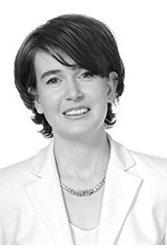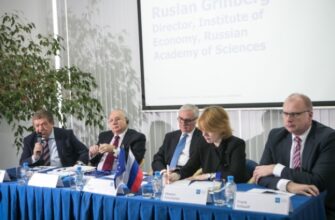On December 9, 2016 State Duma adopted Russian draft state budget in the final reading for the next period. Unlike 2015, when the state budget was approved for one year only, this time the Ministry of Finance has developed a budget for three years – 2017 and planned 2018-2019.
In 2015 a decision on the annual budget was due to the high volatility of financial and commodity markets. However, in February-March 2016, the government decided to go back to the traditional, three-year plan of the main financial document of the country. At this time the budget was adopted in fact by only the representatives of the ruling party United Russia, which after the last elections proved an absolute majority in the State Duma – 342 seats. As a result 315 deputies voted for the adoption of the budget and against – 99. The opposition, represented by the Communist Party, LDPR and Just Russia, criticized the new budget from the first reading, calling it a “budget eating away, fading and survival.”
Since its first submission, prior to the third reading, the draft budget has undergone some changes. The most significant amendment was the increase in budgetary loans for regions in the 2017-2018 years from 100 to 200 billion rubles annually. In addition, the government has allocated 614.6 billion rubles of subsidies to regions for leveling the budget supply, allocated 87.5 billion rubles for priority projects and transferred 9.6 billion rubles from the closed, secret part of the budget in the open. However, at the same time, subsidies for the creation of transport vehicles “with remote and autonomous control” fell from 6 billion rubles to 614 million rubles, and the funds were transferred to the category of closed spending. Total in budget in 2017 more than 540 billion rubles were reallocated, and in general in the 2017-2019 years – more than 1 trillion rubles.
The main characteristics of the budget adopted by the State Duma, determined on the basis of GDP volume forecast of $ 86.8 trillion rubles in 2017 (+0.6%), 92.3 trillion rubles in 2018 (+1.7%) and 98.9 trillion rubles in 2019 (+2.1%) . It is expected that in 2017 the budget revenues will amount to 13.49 trillion rubles, expenses – 16.24 trillion rubles. Thus, the budget deficit will amount to 2.75 trillion rubles, or 3.2% of GDP (in the budget for 2016 – 2.36 trillion rubles / 3%). In the future it is planned to reduce the budget deficit to 2.2% of GDP in 2018 and 1.2% of GDP in 2019. The budget deficit will be covered due to the Reserve Fund and National Welfare Fund. Thus, the country’s Reserve Fund in the amount of 1.15 trillion rubles will be exhausted in 2017 and the amount of funds in the National Welfare Fund will be reduced from 4.89 trillion rubles in 2016 to 3.01 trillion rubles at the end of 2019. According to the draft budget, it is expected that the dollar in 2017 will amount to 67.5 rubles, in 2018 – 68.7 rubles, and in 2019 – 71.1 rubles. At the same time, inflation over the three-year plan will be maintained around 4% and the price of oil – $ 40 per barrel.
If we consider the articles of the state budget expenditures for 2017 that most will be spent on social policy – 5.09 trillion rubles (+10.2% in 2016), the economy – 2.07 trillion rubles (-3.6%), defense – 1.02 trillion rubles (-6.4%), security and law enforcement – 1.27 trillion rubles (-2.1%). On education will be spent 595 billion rubles (+10%), health care – 379 billion rubles (-15.6%) and on the culture – 100 billion rubles (+ 9.9%).
Chief Economist and Head of the Center of Macroeconomic Analysis in Alfa Bank Natalia Orlova commented on the new budget:

“The main theme of the budget 2017 – is the government will be ready to stick to the original rigid cost control plan. In 2016, the initial level of budget expenditure has been declared at the level of 16.2 trillion rubles, but on the basis of the adjustments is now projected at 16.4 trillion rubles.
It is possible that adjustments will be typical and for 2017. The only difference is that while in 2016 the additional costs were associated with the payment on the guarantees of the defense sector, in the 2017 the risk of additional social spending increases. The need for indexation linked to the increase in the number of people with incomes below the subsistence level, that is, with the impoverishment of the electorate. In addition, the fact that the budget is formed in the conservative oil price scenario of $ 40/barrel, meaning that during arising of current prices additional revenues can be spent on social needs”.





